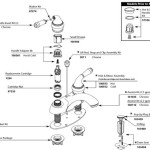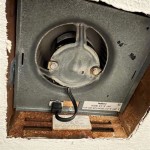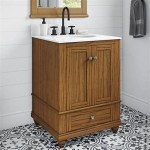```html
How To Replace a Bathroom Shower
Replacing a bathroom shower is a significant home improvement project that can enhance the value and functionality of a residence. This endeavor involves a range of plumbing, carpentry, and sometimes tiling skills. A thorough understanding of the process, coupled with careful planning and execution, is crucial for a successful outcome. This article provides a comprehensive guide on how to replace a bathroom shower, covering essential steps from preparation to installation.
Preparation and Planning
Before commencing the physical work, meticulous planning is essential. This phase includes assessing the existing shower, selecting a suitable replacement, gathering necessary tools and materials, and preparing the work area. A failure to adequately prepare can lead to delays, complications, and increased costs.
The initial step is to thoroughly inspect the existing shower unit and surrounding areas. Identify any signs of water damage, such as mold, mildew, or rotting wood. Pay close attention to the shower pan, walls, and plumbing connections. Determine the type of shower unit currently installed (e.g., stand-alone shower, shower-tub combination) and the desired replacement type. Measuring the shower's dimensions accurately is crucial for selecting a replacement that fits the space. Note the location of plumbing connections, including the shower head, faucet, and drain.
Based on the assessment, select a replacement shower unit that meets design preferences, budget constraints, and functional requirements. Consider the materials used in the shower construction, such as acrylic, fiberglass, or tile. Each material offers different advantages in terms of durability, cost, and aesthetics. Ensure the chosen replacement is compatible with the existing plumbing system. If significant alterations to the plumbing are required, professional assistance may be necessary.
Create a comprehensive materials list, encompassing all necessary items for the replacement process. This includes the new shower unit, plumbing fittings, sealant, grout (if tiling is involved), screws, nails, and any additional materials specified by the manufacturer's instructions for the chosen shower unit. Acquire the appropriate tools, such as a wrench, pliers, screwdriver, level, measuring tape, utility knife, hammer, drill, and safety glasses. Protecting eyes and other body parts is essential during demolition and installation work.
Prepare the bathroom for the shower replacement. Cover the floor with drop cloths or plastic sheeting to protect it from debris and damage. Remove any items from the bathroom that could obstruct work or be damaged during the process. Ensure adequate ventilation in the bathroom. Open windows or use a fan to minimize dust and fumes. Temporarily disconnect the water supply to the shower. Locate the shut-off valves for the shower's hot and cold water lines and turn them off. If individual shut-off valves are not available, turn off the main water supply to the house.
Demolition and Removal
The demolition phase involves carefully removing the existing shower unit and preparing the area for the new installation. This step requires patience and attention to detail to minimize damage to surrounding structures and plumbing.
Begin by removing any shower doors, enclosures, or accessories attached to the existing shower unit. Unscrew or detach these components carefully, following any instructions provided by the manufacturer. Disconnect the plumbing connections to the shower. Use a wrench to loosen and remove the shower head, faucet, and drain connections. Place a bucket or container underneath the drain to catch any remaining water. Exercise caution to avoid damaging the pipes or fittings.
Carefully remove the wall panels or tiles surrounding the shower. Use a utility knife to score along the edges of the panels or tiles to prevent damage to the surrounding walls. Employ a pry bar or similar tool to gently remove the panels or tiles, working from the edges inward. If the shower unit is caulked or adhered to the walls, use a utility knife to cut through the caulk or adhesive. Take care to avoid damaging the wall studs or plumbing behind the panels.
Once the wall panels or tiles are removed, detach the shower pan or base from the surrounding structure. If the shower pan is secured with screws or nails, remove them with a screwdriver or hammer. If the shower pan is adhered to the floor, use a pry bar or similar tool to gently lift it from the floor. Exercise caution to avoid damaging the floor. Inspect the exposed wall studs and floor joists for signs of water damage, rot, or mold. Repair or replace any damaged components before proceeding with the new installation. Clean the area thoroughly, removing any debris, dust, and old adhesive.
Installation of the New Shower
The installation phase involves assembling and installing the new shower unit, connecting the plumbing, and sealing the shower to prevent leaks. This step requires precision and adherence to the manufacturer's instructions.
Refer to the manufacturer's instructions for detailed assembly and installation procedures. Follow the instructions carefully, paying attention to specific requirements and recommendations. Assemble the shower unit according to the provided diagrams and instructions. This may involve attaching side panels, backing, and other components to the shower pan. Ensure all connections are secure and properly aligned. Install the shower pan or base on the prepared floor. Ensure the shower pan is level and properly supported. Use shims or leveling compounds to adjust the height and ensure the pan is perfectly level. Secure the shower pan to the floor according to the manufacturer's recommendations. This may involve using screws, adhesive, or a combination of both.
Connect the plumbing connections to the shower. Attach the shower head, faucet, and drain connections to the corresponding pipes, ensuring the connections are secure and leak-proof. Use Teflon tape or pipe dope on the threads of the connections to create a watertight seal. Tighten the connections with a wrench, being careful not to overtighten and damage the pipes or fittings. Install the wall panels or tiles surrounding the shower. Apply adhesive to the back of the panels or tiles and carefully position them on the wall, ensuring they are aligned and level. Use spacers to maintain consistent spacing between the tiles. Allow the adhesive to dry completely before proceeding.
Apply sealant to all seams, joints, and edges of the shower unit. Use a mildew-resistant sealant specifically designed for bathrooms. Apply a continuous bead of sealant along all edges and corners, ensuring a watertight seal. Smooth the sealant with a finger or a sealant tool. Allow the sealant to dry completely before using the shower. Install shower doors or enclosures, following the manufacturer's instructions. Ensure the doors or enclosures are properly aligned and sealed to prevent leaks. Reconnect the water supply to the shower. Slowly turn on the shut-off valves to the hot and cold water lines. Check for any leaks around the plumbing connections.
```
Replacing Your Bath With A Shower

How To Replace Your Bath With A Shower Victorian Plumbing

Diy Shower Remodel Start To Finish Part 1 Of 2

How To Replace Your Bath With A Shower Tapron

Replace A Bath With Shower Add Touch Of Luxury

Semi Diy Bathroom Remodel Replacing A Tub Surround The Bathtub Tile

Shower Tap Replacement Step By Guide Ps Plumber Singapore

How To Convert A Tub Surround Walk In Shower Bathroom Renovation

How To Replace Your Bath With A Shower Victorian Plumbing

How To Change A Shower Head 7 Easy Steps
See Also







